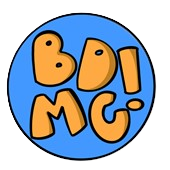Not Your Parent’s Record Collection
Most popular trends tend to be cyclical, fading out of style or use but eventually circling their way back to popular culture and reemerging in the average home or wardrobe. Use bell bottoms or high waisted jeans as an example. Styles that seemed ridiculous in the early 2000’s are the height of fashion today and will probably fade away only to return again.
Contrary to this cyclical trend, technological developments resist the notion of return. While a few individuals may bring back old tech, most of these dated items remain in the garbage pit or antique store. After all, who wants to bring back the flip phone at this point when it’s simply inconvenient to go against the technological grain?
In the musical world, one piece of technology defies traditional “tech logic” and has indeed followed the aforementioned cyclical pattern. I give you the record player and its subsequent vinyls. Working slowly back upon the shelves of large scale retailers, popular e-commerce sites, and even revitalized indie shops, the record player and vinyls firmly re-cemented themselves in the music sales industry.
Nearly a hundred years after Mamie Smith’s “Crazy Blues” restructured the vinyl distribution and the listening processes, vinyl remained the best selling physical form of music in 2020. Vinyl’s popularity does not simply derive from old collectors feeling the itch to expand their 80’s hair metal collection either. These days, newer, popular albums are the best sellers.
Harry Styles, Mac Miller, Adele, and Billie Eilish all placed in Billboard’s Top 15 best selling vinyl albums of 2020, with Styles’s “Fine Line” summiting the chart. Clearly, this indicates that the youth culture now holds stock in the vinyl industry and are driving music distribution and listening back in time.
“Booming record sales truly express a return of music in its purest form: lacquer, grooves, plastic, a revolving disc, and a needle.”
Perhaps the most interesting aspect of vinyl’s resurgence is the unorthodox nature of the product. Vinyls are not cheap. They’re not convenient. Their song collections remain shockingly limited compared to the luxurious archives of Apple Music and Spotify. From a technological standpoint, vinyls offer no advancement. And, if anything, other older forms of physical music such as cassettes and CD’s remain more economical. Still, vinyl sales increased for the fifteenth consecutive year while CD’s continued their decline in popularity.
Even COVID-19 could not contain the vinyl trend. Despite early predictions that most local record stores would go under during the pandemic, vinyl sales shot up 46% compared to 2019, and the brick and mortar stores who successfully added an e-commerce method typically produced better sales rates as well.
Technology and the record player’s developing path certainly sway from traditional logic, but perhaps this is more indicative of music and its lovers than the fast paced world of tech development. Music litters nearly every experience today. Coffee shops, sporting events, tv shows, and even Walmart always have music on in the background. Maybe sitting down and putting on a record adds a bit of intentionality to the modern listening experience?
The idealist in me wants to believe that every record purchased from Amazon or your local indie store will be played a thousand times in a room where friends specifically focus and discuss the album’s content.
The cynic in me recognizes that many of these records will exist idly as art on a shelf, serving purpose as a stylistic trend. However, booming record sales truly express a return of music in its purest form: lacquer, grooves, plastic, a revolving disc, and a needle.
The mere physicality of vinyls and album art create an attachment to the music. All types of owners can connect with and appreciate their unique collections far more than their liked songs Spotify playlist.
If you haven’t joined in on this vinyl resurgence yet, I implore you to mosey on down to a local store, spend a few minutes (or hours) browsing the crates, and pick out your favorite album. Start with music you know and love to create a strong connection with your record collection and simply appreciate the act of listening.
Then, expand your collection by taking recommendations from others. Finally, start buying those obscure albums that whose contents are unknown and you’ll be amazed by what you might find. Listen alone. Listen with friends. However you listen, I promise that the intentionality of a vinyl will increase your love for the songs tenfold.



